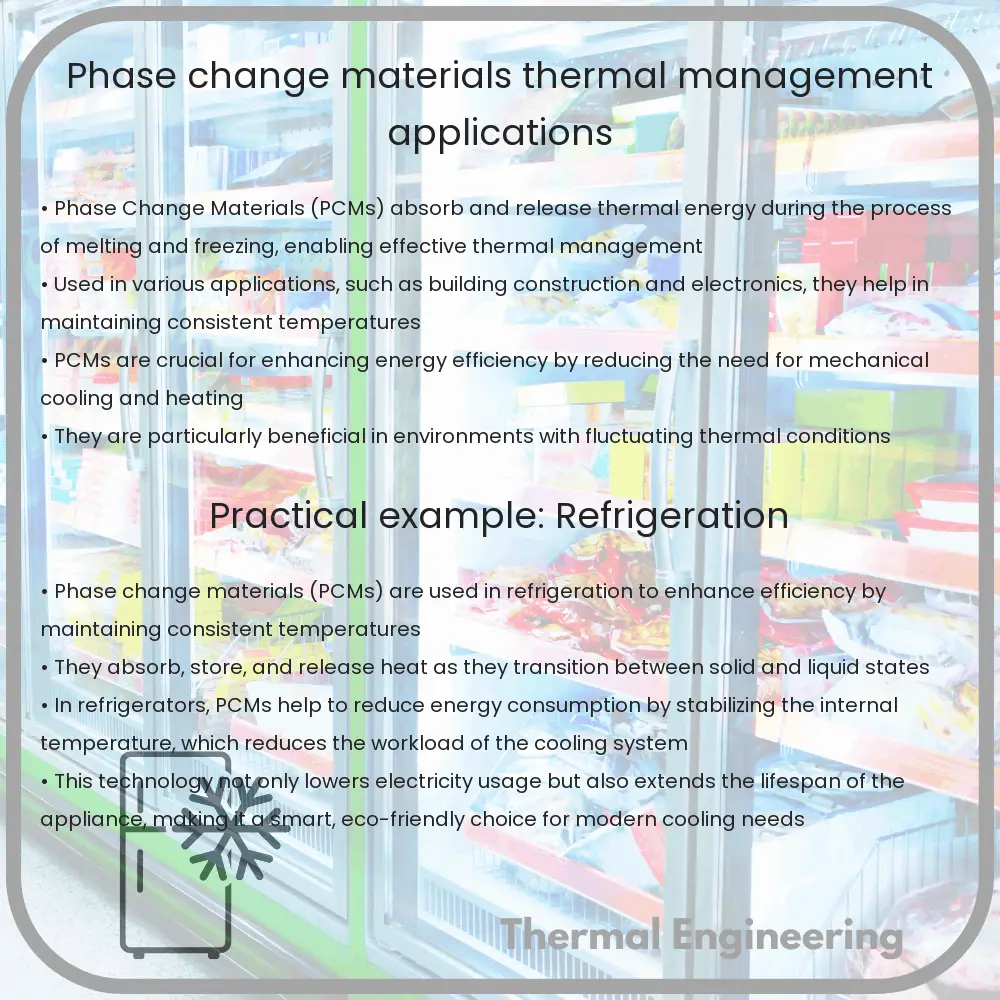Learn about Phase Change Materials (PCMs), substances that manage thermal energy by melting and freezing at specific temperatures.

Understanding Phase Change Materials and Their Role in Thermal Management
Phase Change Materials (PCMs) are substances that absorb and release thermal energy during the process of melting and freezing. As they transition between solid and liquid states at a specific temperature, they are able to store and release large amounts of energy, making them ideal for use in thermal management systems across various applications.
How Phase Change Materials Work
The functionality of PCMs is based on their inherent property of latent heat. When a PCM reaches its melting point, it absorbs a significant amount of heat from the environment (latent heat of fusion). This heat is stored within the material without raising its temperature. Conversely, when the PCM solidifies, it releases this stored heat back into the environment. The chemical formula for the latent heat is given by Q = m*L, where:
- m is the mass of the material,
- L is the latent heat capacity.
This characteristic makes PCMs highly effective for thermal buffering and insulation purposes.
Types of Phase Change Materials
PCMs are categorized primarily into three types based on their chemical composition:
- Organic PCMs: These include paraffin waxes and fatty acids, known for their reliability and congruent melting properties. They do not exhibit supercooling and have relatively stable melt/freeze cycles.
- Inorganic PCMs: Examples are salt hydrates. They have higher latent heat per unit volume than organics but can suffer from phase separation and supercooling.
- Biobased PCMs: These are derived from natural sources and are increasingly gaining attention due to their environmental benefits and renewable origins.
Applications of Phase Change Materials
PCMs have a wide range of applications, notably in:
- Building and Construction: Integrating PCMs in building materials like wallboards or ceiling tiles to help regulate indoor temperatures, reducing the need for air conditioning and heating.
- Energy Storage: PCMs can be used to store excess heat generated by solar panels during the day and release it during cooler periods, enhancing energy efficiency.
- Textiles: Incorporation of microencapsulated PCMs in fabrics for protective clothing or in bedding for regulating body temperature.
- Electronics: PCMs are used in devices to manage heat generated by electronics, thereby improving performance and extending the lifespan of components.
Challenges and Future Directions
While PCMs offer significant advantages for thermal management, several challenges remain in their widespread adoption:
- Cost Efficiency: High-quality PCMs can be expensive, which limits their use in cost-sensitive applications.
- Stability Over Time: Some PCMs can degrade after many cycles of melting and freezing, which affects their effectiveness and lifespan.
- Integration Issues: There are technical challenges related to integrating PCMs into existing systems and materials.
Despite these challenges, ongoing research and technological advancements are improving the performance and viability of PCMs. Innovations such as nano-enhanced PCMs and hybrid materials that combine both organic and inorganic PCMs are being explored to overcome existing limitations.
In conclusion, Phase Change Materials present a promising solution for improving thermal management in various sectors. As research continues to enhance their efficiency and cost-effectiveness, we can expect to see greater integration of PCMs in everyday applications, driving forward sustainable and energy-efficient technologies.